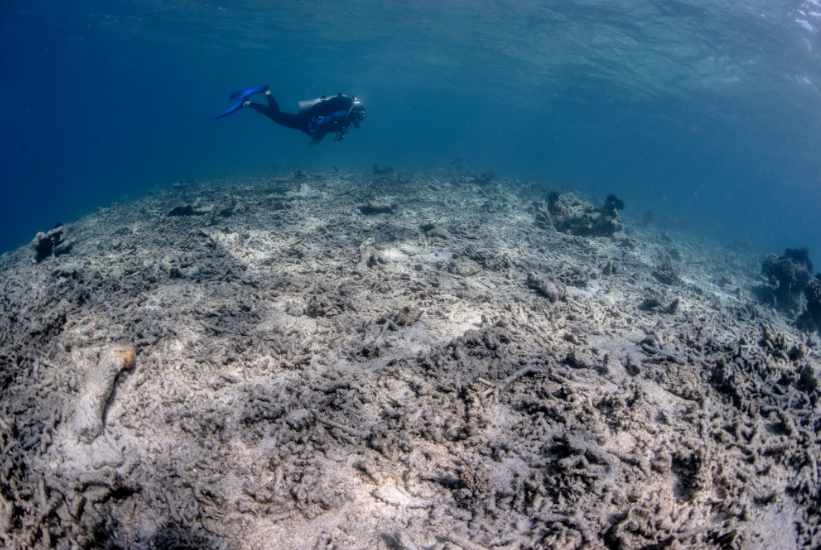
这是 2025 年 4 月 26 日补的,直接使用的百度翻译。
译文
本·威廉姆斯静静地坐在伦敦的公寓里,等待着耳机里传出一种非常特殊的声音。当他听到它时,他就会知道:威廉姆斯说,那短暂的撞击声“会把你吓得魂飞魄散”。
威廉姆斯是伦敦大学学院海洋生态学博士生,他正在听在印度洋-太平洋地区捕获的水下录音,以寻找爆炸捕鱼的声学证据,爆炸捕鱼是一种使用炸药杀死或眩晕鱼类的破坏性做法。他的发现对谷歌DeepMind至关重要,威廉姆斯是该公司的一名学生研究员,该公司正在利用这些发现训练一种名为SurfPerch的人工智能工具。
生态学家长期以来一直使用音频数据来识别偷猎和爆破捕鱼等潜在威胁,评估动物种群,并评估生态系统健康状况。但计算机可以做得更快。威廉姆斯说,人类可能需要数周的时间来筛选40小时的录音,SurfPerch将能够在几秒钟内完成同样的工作——至少在经过适当训练后。
他说:“它可以将我们可以处理的数据量增加几个数量级。”。
如今,SurfPerch可以识别38种不同的海洋声音,包括海豚的咔嗒声和Ambon damself的叫声。该工具正在使用世界各地科学家收集的音频进行训练,包括谷歌的“呼唤我们的珊瑚”计划,该计划使用人类志愿者和海洋生态学家来识别海洋声音。威廉姆斯和谷歌艺术与文化项目经理克莱尔·布鲁克斯表示,SurfPerch的最终目标是利用人工智能加速自然保护。
谷歌并不是唯一一个看到这种潜力的公司。随着污染、森林砍伐和气候变化导致野生动物栖息地缩小,物种的消失速度比自然灭绝速度快10000倍。人们越来越需要了解生物多样性生态系统,部署人工智能来增强声学监测的势头越来越大。人工智能已经被用来追踪刚果的大象,并破译蝙蝠的语言。
Chirrup.ai的创始人Conrad Young表示,公司也对生物多样性情报感兴趣。自2022年成立以来,这家总部位于伦敦的初创公司已经为英国和爱尔兰的80多个农场进行了人工智能鸟类监测。Chirrup从一个地方收集了14天的声学数据,然后使用其算法——该算法可以识别几乎所有当地的鸟类——来计算物种数量并命名。物种数量越多,环境就越健康。
杨说:“生物多样性是供应链中的一个重要风险和机遇。”。有良好业绩记录的农场可能会获得政府补贴,公司面临着越来越大的监管压力,要求其减少环境足迹。法国已经将生物多样性风险纳入其对金融机构的强制性披露中,更多国家可能会效仿:2022年,195个国家签署了一项协议,到2030年保护和恢复至少30%的地球土地和水资源。
虽然人工智能可以帮助评估生态系统,但如何利用这些数据来加强保护仍然存在一些问题。与以减少大气中温室气体排放为中心的气候变化缓解不同,生物多样性保护没有简单的共享指标。即使是“到2030年达到30%”的目标也有很大的解释空间。
谷歌DeepMind的威廉姆斯也认为,利用人工智能进行保护仍处于“早期”。但初步结果显示了一些希望。
SurfPerch不仅帮助识别非法爆破捕鱼,还监测珊瑚礁,珊瑚礁是重要的海洋生态系统,每年支撑着估计2.7万亿美元的商品和服务。在那里,人工智能工具通过减少对单个物种的关注,更多地关注珊瑚礁的“声景”来绕过实际限制,即生活在珊瑚礁上的所有物种共同产生的声音。人工智能正在学习区分退化珊瑚礁和健康珊瑚礁的声景,这是一个可用于评估恢复工作或确定何时需要商业捕鱼禁令的框架。
原文
The sound of science
By Coco Liu
Ben Williams sits quietly in his London apartment, waiting for a very specific sound to emerge from his headphones. He’ll know it when he hears it: Williams says the short, percussive bang “can shake you out of your skin.”
A PhD student in marine ecology at University College London, Williams is listening to underwater recordings captured in the Indo-Pacific for acoustic evidence of blast fishing, a destructive practice that uses explosives to kill or stun fish. His findings are critical to Google DeepMind — where Williams is a student researcher — which is using them to train an AI tool known as SurfPerch.
Audio data has long been used by ecologists to identify potential threats such as poaching and blast fishing, to assess animal populations, and to evaluate ecosystem health. But computers can do it faster. Where it might take weeks for a human to sift through 40 hours of audio recordings, Williams says SurfPerch will be able to do the same within seconds — at least once it’s properly trained up.
“It can increase the amount of data we can work with by orders of magnitude,” he says.
Today, SurfPerch can identify 38 different marine sounds, including the clicks of dolphins and the whooping of Ambon damselfish. The tool is being trained on audio collected by scientists all over the world, including from Google’s “Calling in Our Corals” program, which uses human volunteers and marine ecologists to identify ocean sounds. The ultimate goal for SurfPerch, says Williams and Clare Brooks, program manager at Google Arts & Culture, is to leverage artificial intelligence to accelerate nature conservation.
Google isn’t alone in seeing that potential. As pollution, deforestation and climate change shrink wildlife habitats, species are disappearing up to 10,000 times faster than the natural extinction rate. There is a growing need to understand biodiverse ecosystems, and deploying AI to augment acoustic monitoring is gaining steam. AI has already been used to track elephants in the Congo and to decipher bat-speak.
Companies are also interested in biodiversity intelligence, says Conrad Young, founder of Chirrup.ai. Since its launch in 2022, the London-based startup has conducted AI-enabled bird monitoring for more than 80 farms in the UK and Ireland. Chirrup collects 14 days of acoustic data from a location, then uses its algorithm — which can identify nearly all local bird species — to count the number of species and name them. The greater the quantity of species present, the healthier the environment.
“Biodiversity is an important risk and opportunity in the supply chain,” Young says. Farms with solid track records could potentially be rewarded with government subsidies, and companies face growing regulatory pressure to reduce their environmental footprint. France already includes biodiversity risks in its mandatory disclosures for financial institutions, and more countries could follow suit: In 2022, 195 nations inked a deal to protect and restore at least 30% of the Earth’s land and water by 2030.
While AI can help evaluate ecosystems, there’s still some question as to how the data might be used to bolster conservation. Unlike climate change mitigation, which centers on reducing greenhouse gas emissions in the atmosphere, there is no easy shared metric for biodiversity protection. Even the “30% by 2030” goal leaves plenty of room for interpretation.
Williams at Google DeepMind agrees that leveraging AI for conservation is still “in its early days.” But initial results show some promise.
SurfPerch not only help identifies illegal blast fishing, but it also monitors coral reefs, crucial marine ecosystems that underpin an estimated $2.7 trillion a year of goods and services. There, the AI tool gets around practical limitations by focusing less on individual species and more on a reef’s “soundscape” — sounds produced collectively by all of the species living on it. AI is learning to distinguish the soundscapes of degraded reefs from healthy ones, a framework that could be used to evaluate restoration efforts or to determine when commercial fishing bans are needed.
原文链接
长按/扫码,有您的支持,我们会更加努力!


|
